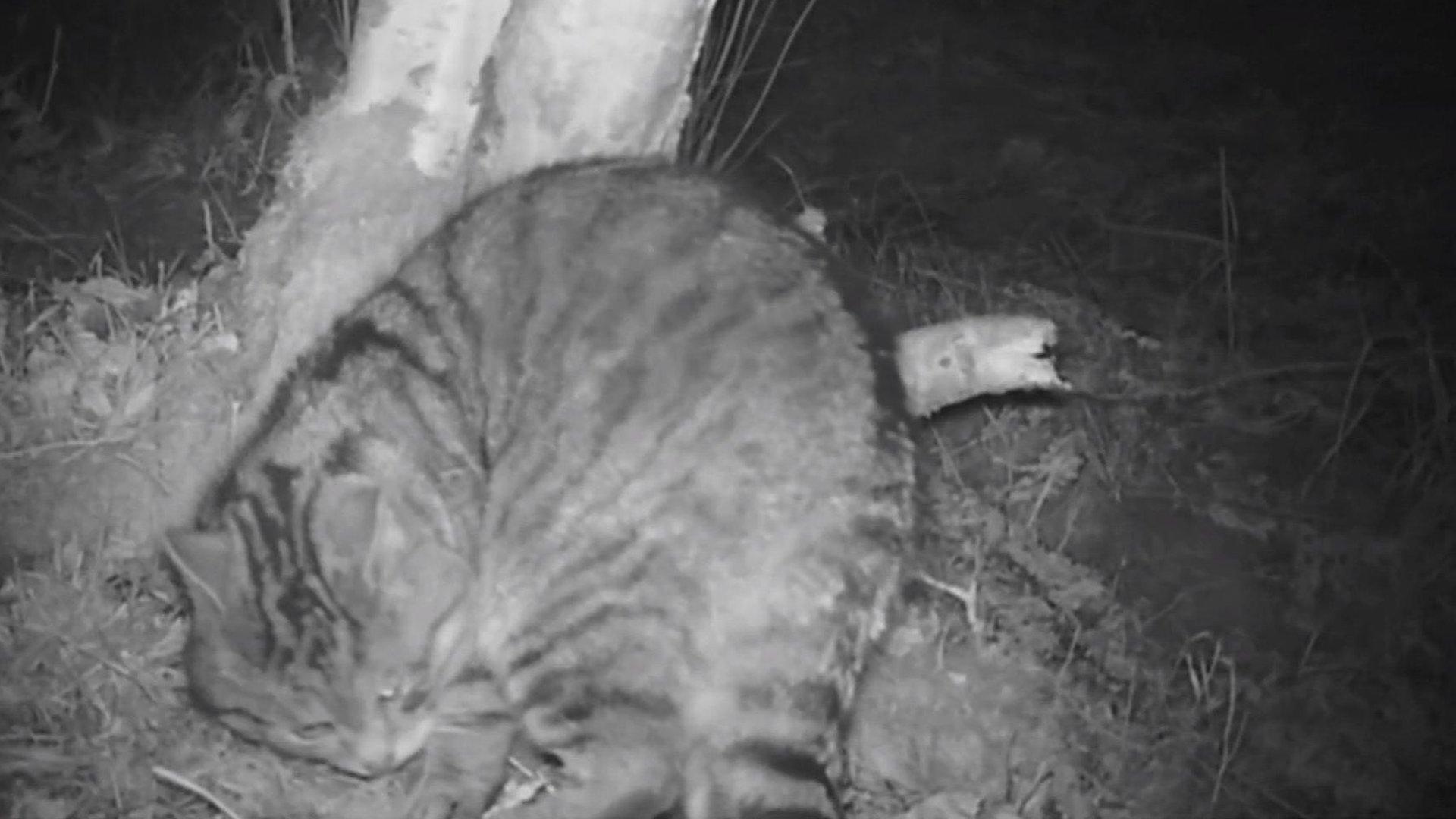Scotland's wildcats 'functionally extinct' in the wild
- Published

The study showed Scottish wildcats are part of the same gene pool as domestic cats
A major study has concluded that Scottish wildcats are now part of the same gene pool as domestic cats.
The author of the research said it suggested wildcats were extinct, or on the brink of extinction, in the wild.
The researchers, from the Wildgenes Lab at Edinburgh Zoo, studied the DNA of almost 300 cats, most of which had been identified as wildcats.
They found all those living in the wild were part of the same hybrid gene pool as domestic animals.
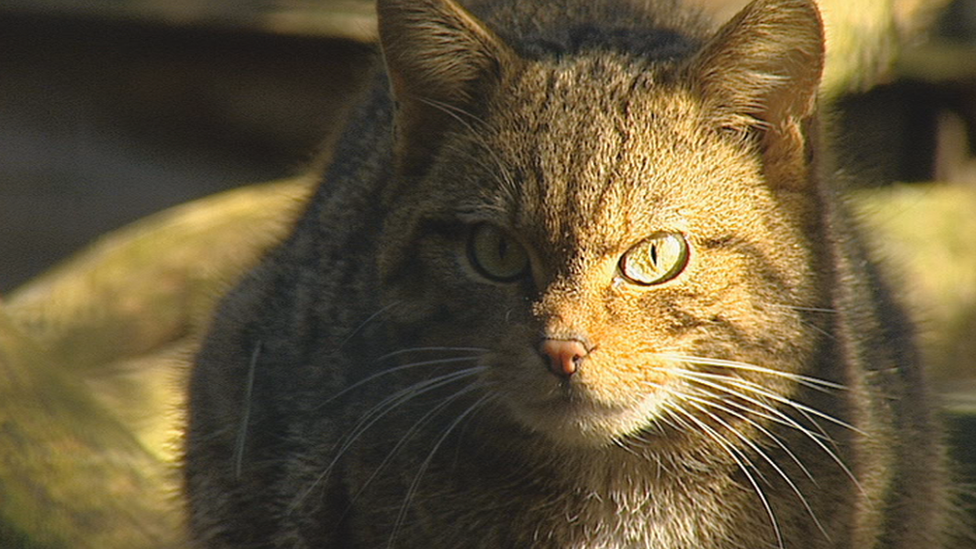
The lead author of the study, Dr Helen Senn, said the vast majority of cats in the wild were "hybrids" and, from a "functional perspective", Scottish wildcats were on the brink of extinction.
The key to future conservation efforts appears to lie in the almost 100 wildcats in captivity across the UK, which have a stronger genetic inheritance.
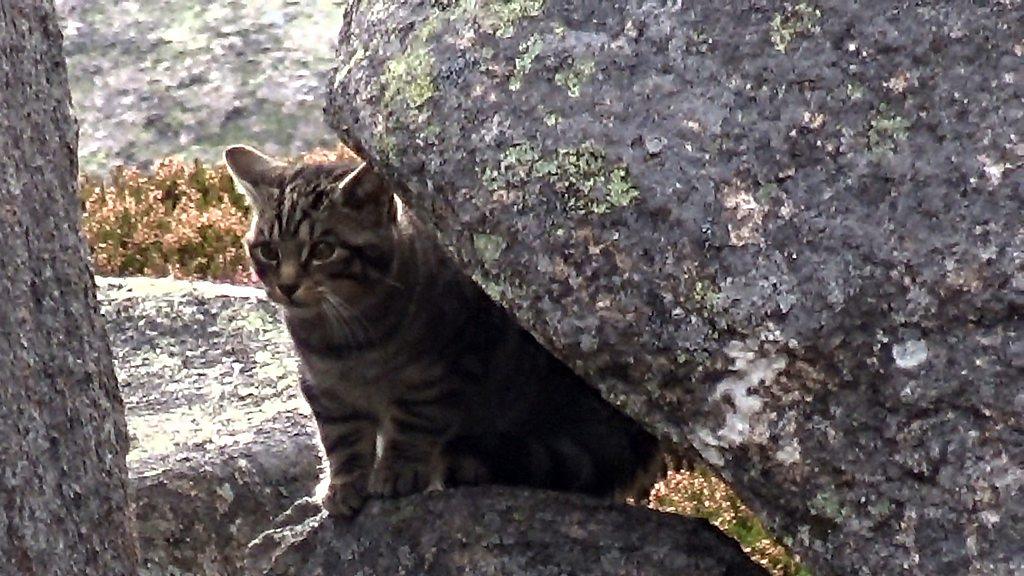
'Highland tiger'
The fundamental problem is simple.
Scottish wildcats just love making kittens and they're not too choosy who they make them with.
The same is true for domestic cats, feral or otherwise.
That interbreeding has long been recognised as a major threat to the survival of the "Highland Tiger".
Now we know just how bad things are.
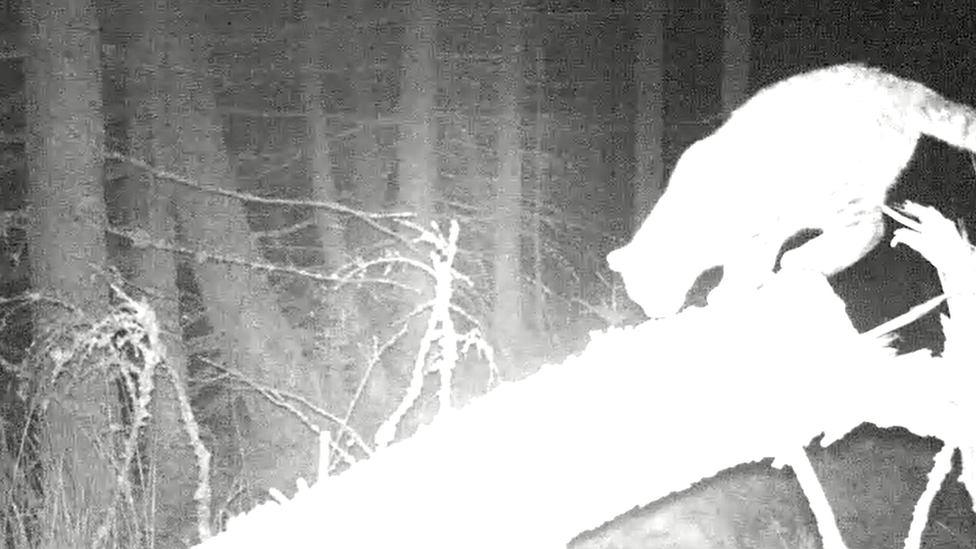
A "wildcat" captured on night vision camera
What did they study?
The researchers at the Royal Zoological Society of Scotland (RZSS) Wildgenes Lab studied the DNA of 295 cats.
These were:
125 wild-living dead cats that were collected over 25 years
60 "historical" dead cats - primarily identified as wildcats shot by gamekeepers between 1895 and 1985
19 cats trapped in the wild as part of a survey by Scottish Natural Heritage
72 captive wildcats
19 domestic cat samples from across Edinburgh

'Hybrid swarm'
The study, which has been published in the journal Evolutionary Applications, found the cats living in the wild were part of the same gene pool as domestic animals.
The scientific term is a "hybrid swarm".
Dr Senn described the findings as very sad news.
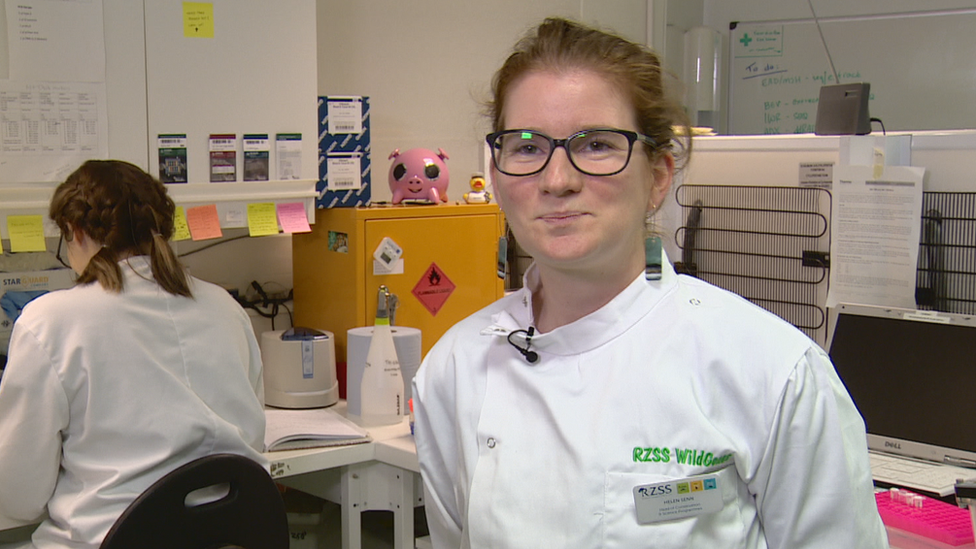
Dr Helen Senn said genetic mixing was not likely to be good for the wildcat population
"Because although there are possibly a few cats out there that we could consider to be mostly wildcat from a genetic perspective, the vast majority are hybrids," she said.
"And even if we find those few cats, you've only got to fast forward one generation to think 'who are those cats going to mate with?'
"So I think we would say from a functional perspective this population is extinct or on the brink of extinction."

Two wildcat kittens were born at Alladale Wilderness Reserve as part of a captive breeding programme
The partners in the study included Scottish Natural Heritage, Oxford University and National Museums Scotland.
The last of these is a clue to how the researchers established what a wildcat genome should look like: they extracted DNA from long-dead, stuffed museum exhibits.

A Scottish wildcat kitten was born at Chester Zoo earlier this month
Dr Alex Ball said that was not as big a challenge as it may seem.
"DNA from highly-degraded samples is what we specialise in here at the Wildgenes Lab," he said.
"We basically have to work with DNA from faecal samples or from ancient museum samples that have gone through a lot of processes and the DNA is not intact.
"It's fragmented, it's broken down, it's in really small sections."
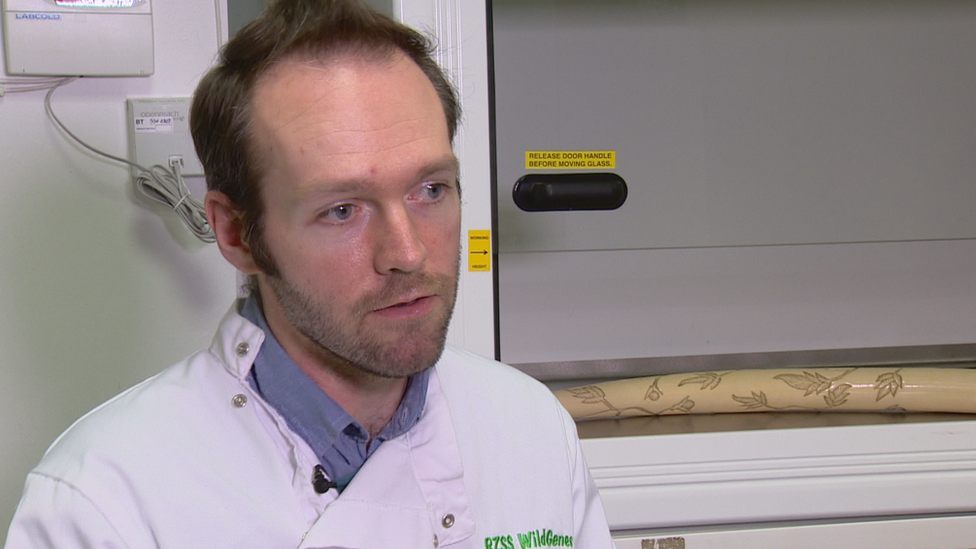
Dr Alex Ball said the lab specialised in highly-degraded DNA samples
The term "pure bred" wildcat is one the geneticists are loath to use.
And even if one carries genes from domestic moggies, does it matter if it still walks like a wildcat and looks like a wildcat?
Difficult habitat
The issue is that domestic cats are descended from the Middle Eastern wildcat and Scottish wildcats have a European genetic inheritance.
Dr Senn said the effect of that genetic mixing remained unknown but she was not optimistic.
"It's highly likely it's not going to be positive for the wildcat population," she said.
"This is a species that's on the brink.
"It has to live in very difficult habitat and climatic conditions, and probably hybridisation with a species that originated in much warmer climates in the Middle East and North Africa isn't going to be positive for its survivorship in the wild."
The RZSS is one of more than 20 members of the conservation partnership Scottish Wildcat Action (SWA).
It is clear they do not see this as a signal to stop conservation efforts.
Among the SWA's current initiatives to combat the spread of genes from domestic cats in wildcat areas is TNVR, which stands for "trap, neuter, vaccinate, release".
They also surveyed the wildcat population using camera traps and other techniques, and the emphasis is shifting towards capturing live specimens with the best quality DNA.
The key to the future seems to lie in the almost 100 wildcats living in public and private sanctuaries across the UK.
The testing has shown these captive cats have a stronger genetic inheritance and it is hoped their DNA could be reintroduced to the wild.
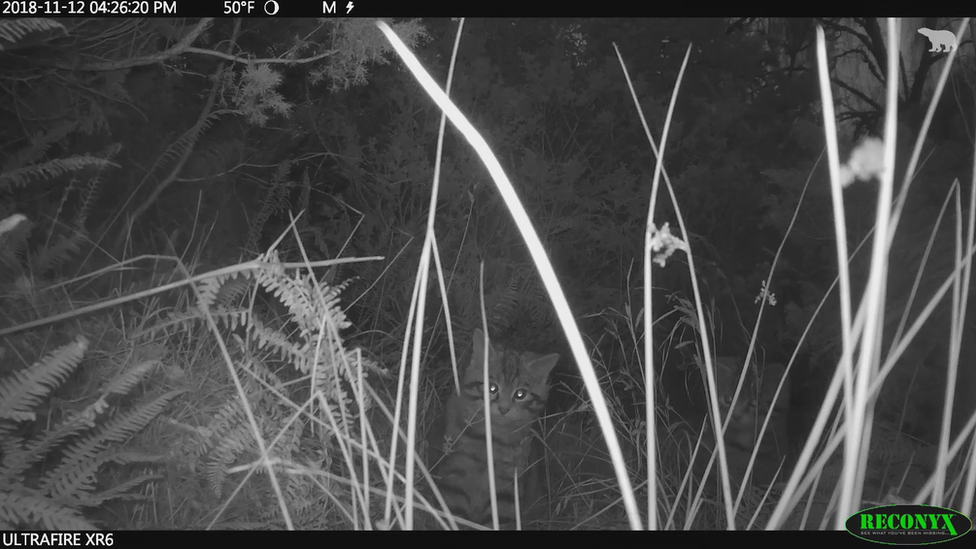
Wildcat kittens kept away from the public at the Highland Wildlife Park at Kingussie
The SWA is awaiting a report it has commissioned from the International Union for the Conservation of Nature which will outline what more can be done to protect the species.
Dr Senn thinks DNA from wildcats held at the RZSS Highland Wildlife Park at Kincraig near Kingussie could yet turn the tide.
She said: "I think it's really important that we protect those few remaining cats that we can identify in the wild and that we learn as much as we can from them.
"But we will have to start to think about an insurance policy, and at RZSS we've always thought that would be a potential issue.
"So we've been working on the captive breeding population, trying to expand its genetic diversity and move it into a position where perhaps in the future it might be suitable for reintroduction."
Until then the conclusion of the study seems to be we will have to be clear what we're talking about when we talk about wildcats.
- Published19 July 2018
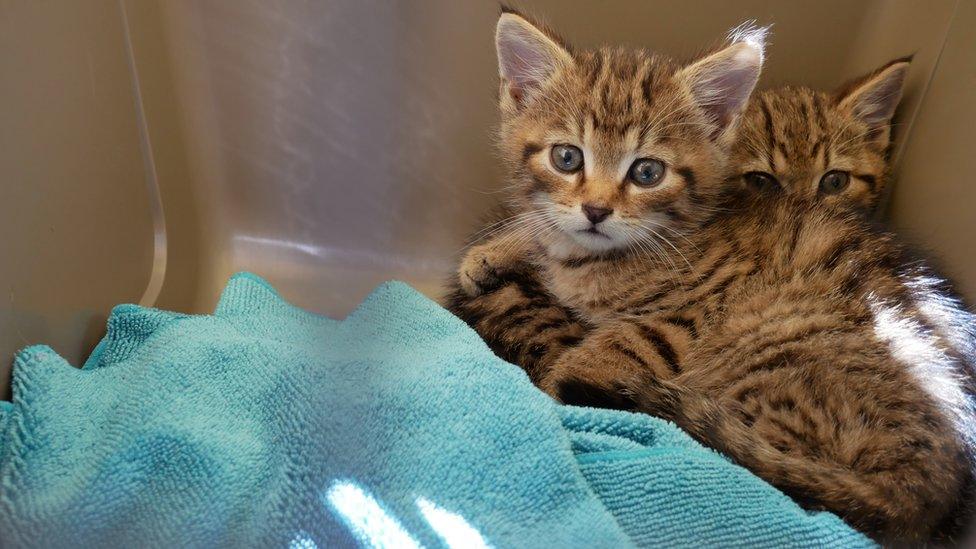
- Published28 March 2018

- Published26 July 2018
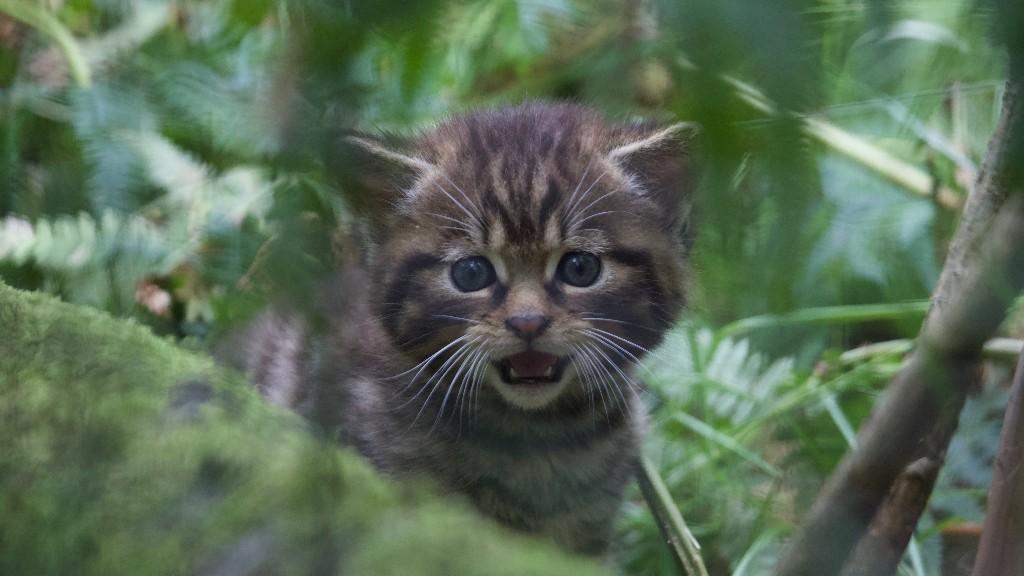
- Published22 February 2017
